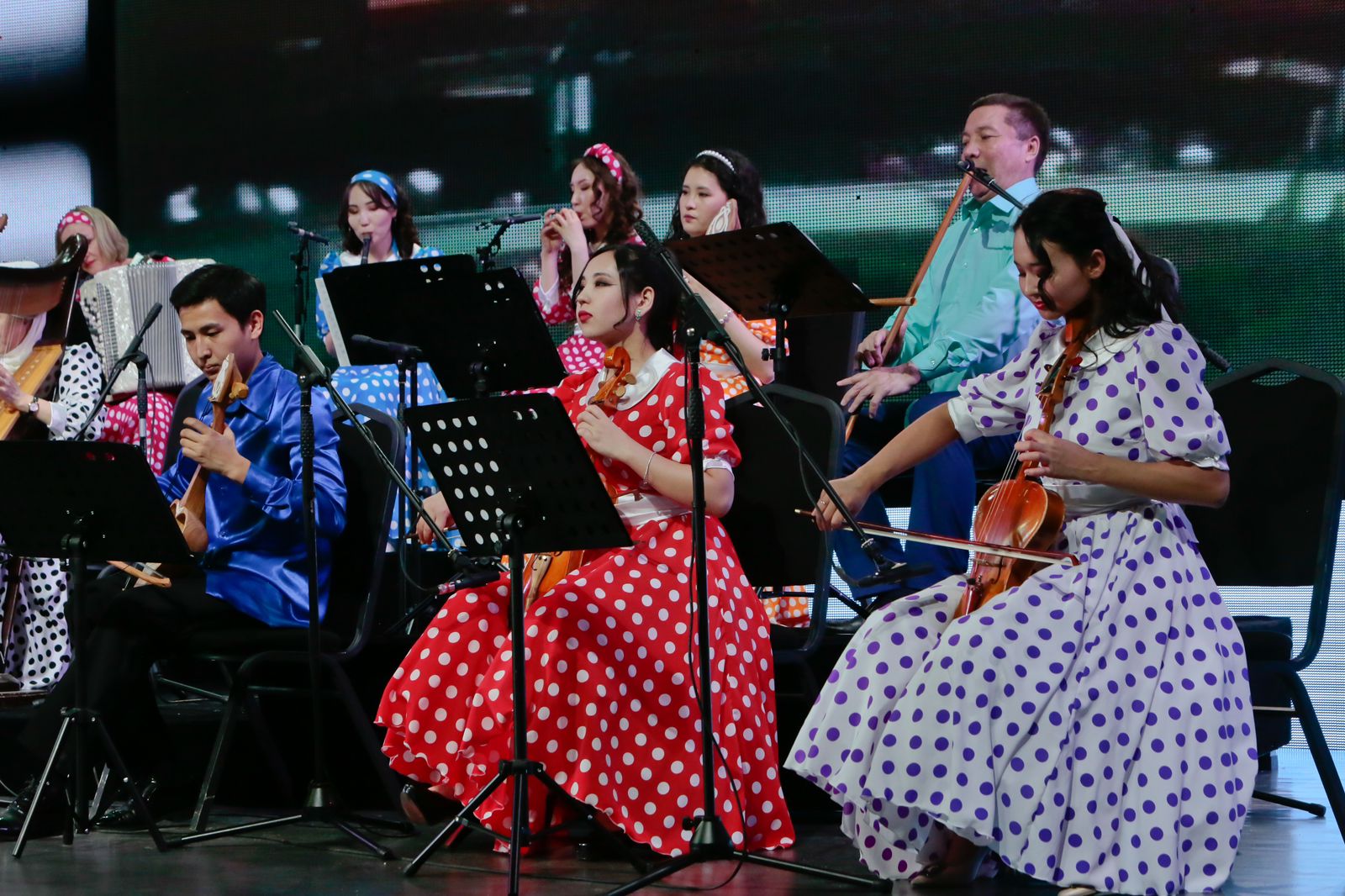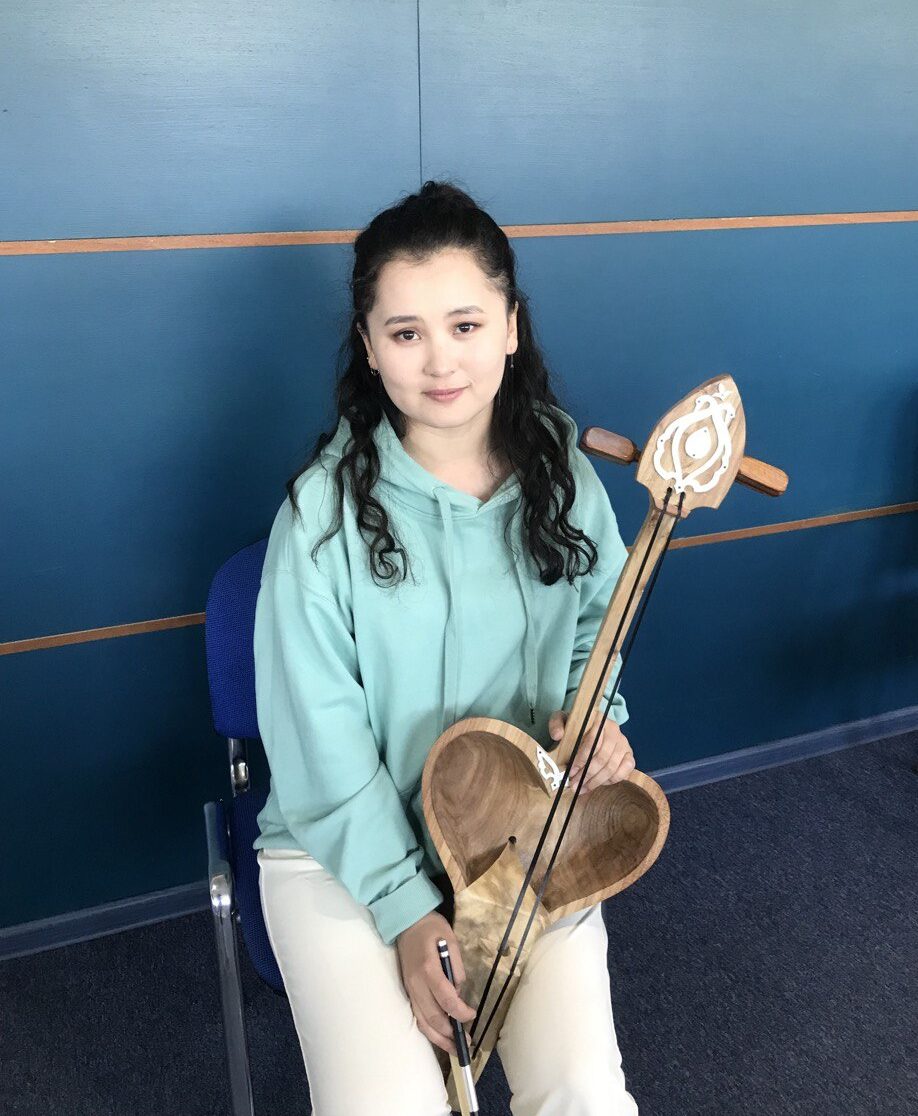ASTANA – The Saryarka Ensemble has been sharing a cultural treasure with audiences locally and internationally for 25 years. The band plays unique national instruments that have been around for centuries.

Concert. Photo credit: Saryarka Ensemble.
The group was established in 1998. Since then, they have given concerts all over Kazakhstan and participated in international competitions and festivals in Europe and Asia.
The musicians delight the audience by playing both modern and ancient instruments.

Togzhan Zhakhin. Photo credit: Saryarka Ensemble.
“Our folklore instruments originated in antiquity. For example, the dombra has existed for more than 1,000 years; similar instruments are depicted in cave paintings discovered during excavations,” said Saryarka Ensemble’s lead Togzhan Zhakhin, who spoke to The Astana Times about the history, features, and sound of some folk instruments and the degree of their popularity.
He explained that Nomadic Turkic folks had similar musical instruments, and they were spread over a large territory during the Turkic Khaganate.
“Kobyz is associated with Korkut Ata, a common ancestor of the Turkic peoples,” said Zhakhin.

Kyl-kobyz, string-bow instrument, from which the violin originated. Photo credit: The Astana Times.
He acknowledges the contribution of Kazakh scientists to preserving the musical heritage.
“Many of our wind instruments have reached us thanks to the efforts of ethnographers such as Bolat Sarybaev, Uzbekali Dzhanibekov and Akhmet Zhubanov. These instruments are being researched, updated, and their range is being expanded,” he said.
The folk instruments can be divided into wind, string-stringed, string-plucked, percussion and reed instruments.
Zhakhin notes the peculiar sound of some of the instruments and how they changed over time.

Sazsyrnai, with the 1.5-octave sound range, the wind instument enables playing full-fledged works. Photo credit: The Astana Times.
“Among wind instruments, the sazsyrnai has an interesting cold sound. There are more than six types of this instrument. Initially, the sazsyrnai had a range of three-four sounds. Later, during the time of Bolat Sarybaev, the range was expanded to seven sounds. To date, the sazsyrnai can produce the 1.5-octave sound range, which is around 10-11 sounds with semitones, enabling it to play full-fledged works. It is liked by many people. The Kazakh National Conservatory has a department of folklore instruments, where students choose the sazsyrnay as a major instrument or an additional one,” he said.
Another wind instrument is the sabyzgy, which, according to Zhakhin, is rarer than other folk wind instruments because of its complexity of sound extraction.
“In our country, there are not many enthusiasts of this instrument. One of our creative team’s musicians plays this instrument in a traditional manner, which is different from the more widespread way of playing. I believe more classical performers will appear soon,” he said.

Nar-kobyz, string-bow instrument historically widespread in the Kyzylorda Region. Photo credit: The Astana Times.
The string-bow group of the instruments includes kyl-kobyz and nar-kobyz.
“The sound of kyl-kobyz is mesmerizing and magical. Some experts compare it with the sound of a person’s voice, which is why it has such a piercing effect on a person. Shamans used this instrument in their rituals. It is also acknowledged that the violin originated from this instrument,” Zhakhin said.
The Saryarka ensemble’s musicians recently played nar-kabyz, which is historically widespread in the Kyzylorda Region.
Zhakhin also mentioned a string-plucked instrument called the adyrna.

Adyrna, the string-plucked instrument similar to Celtic harp. Photo credit: The Astana Times.
“Adyrna was used by hunters in ancient times. Today it has an arrow shape, while previously it resembled a deer. This instrument is similar to the Celtic harp. Its specific sound gives a sense of magic,” he said.
Zhakhin is optimistic about the popularization of traditional instruments.
“The popularization level is high. Musicians use these instruments in experimental projects. For example, the Saryarka ensemble performs musical hits of recent years using these instruments, and the audience enjoys such concerts,” he said.


